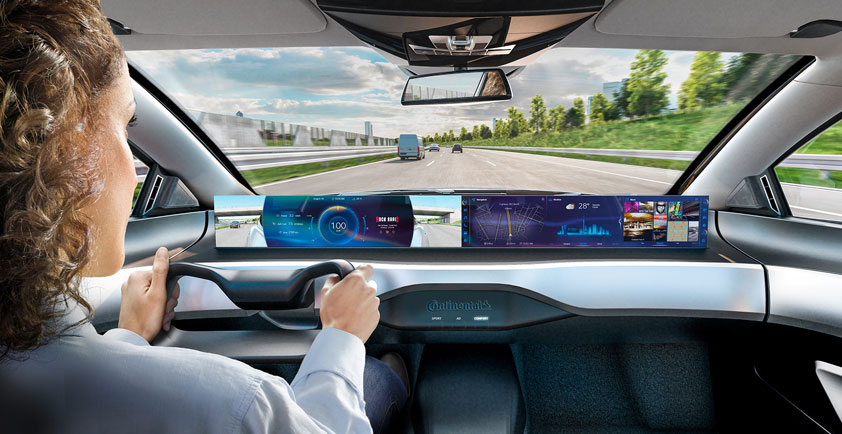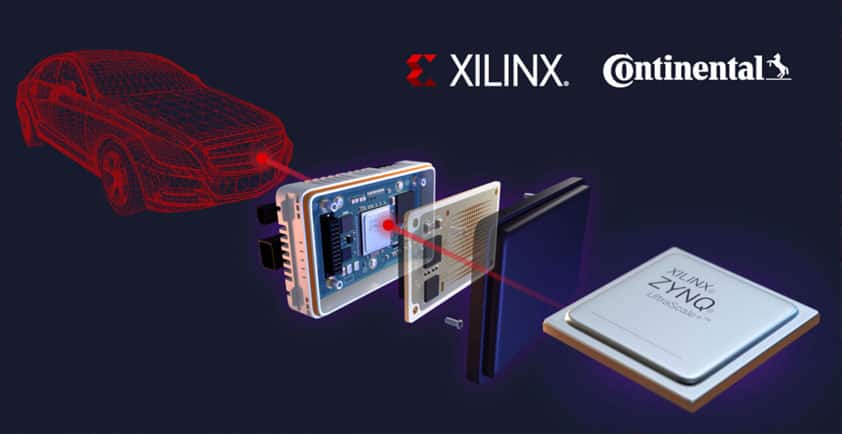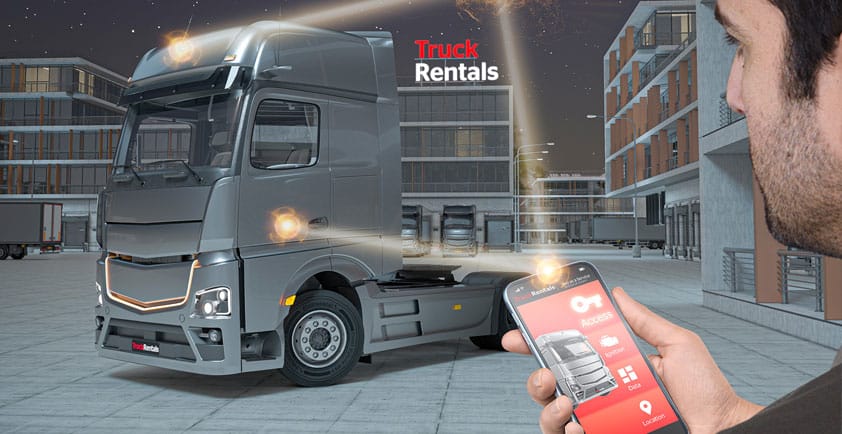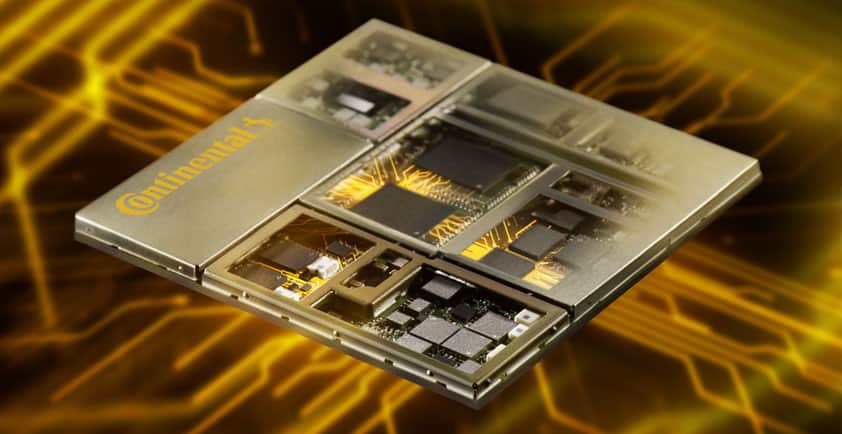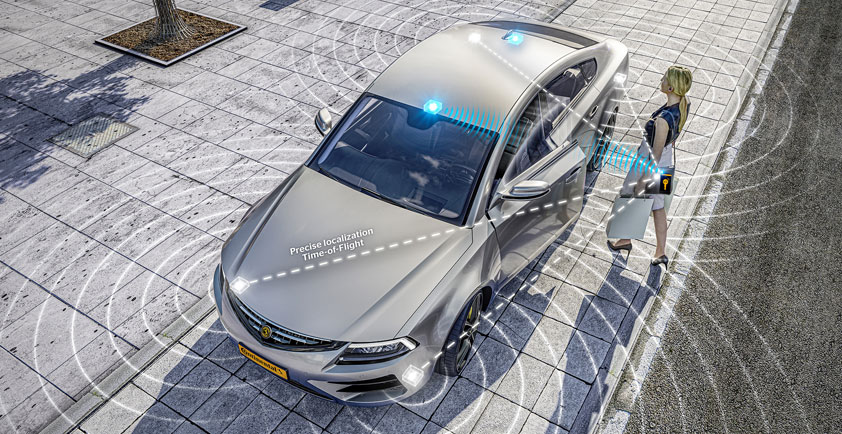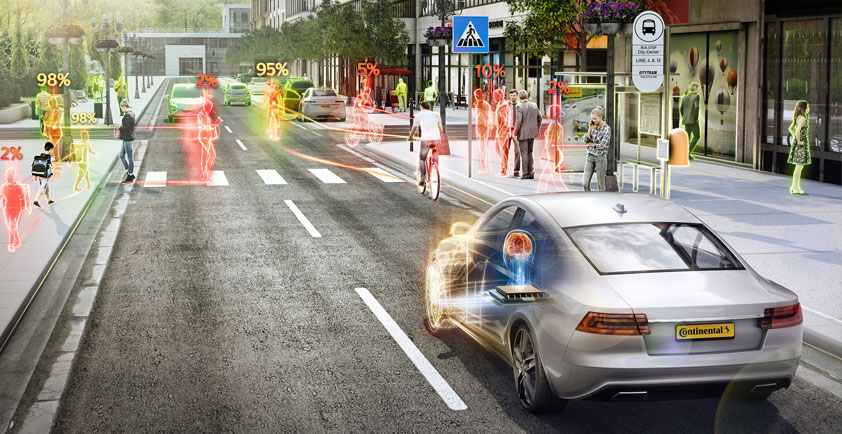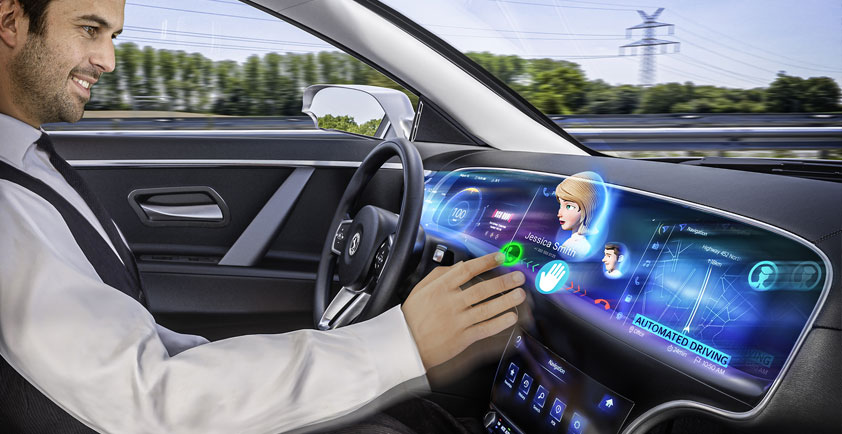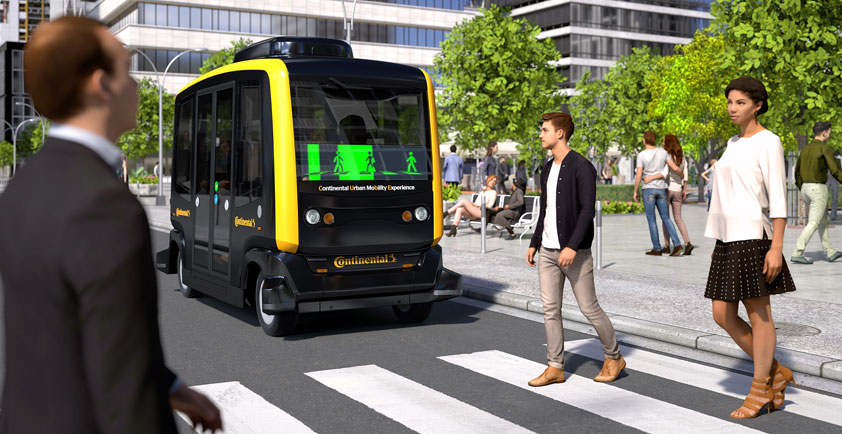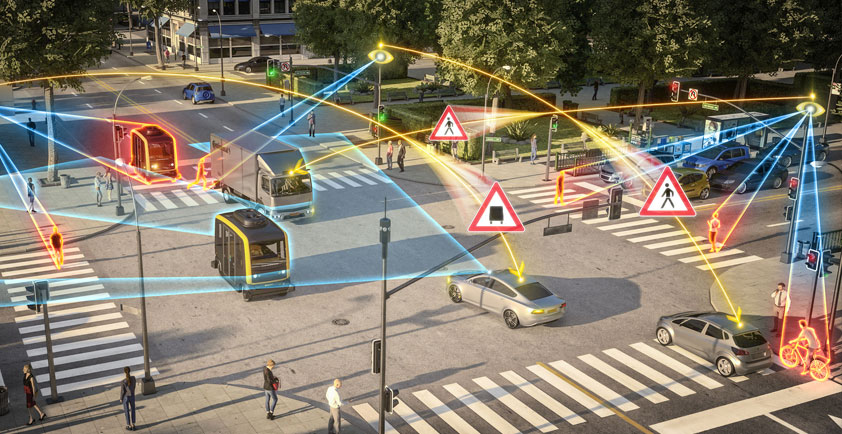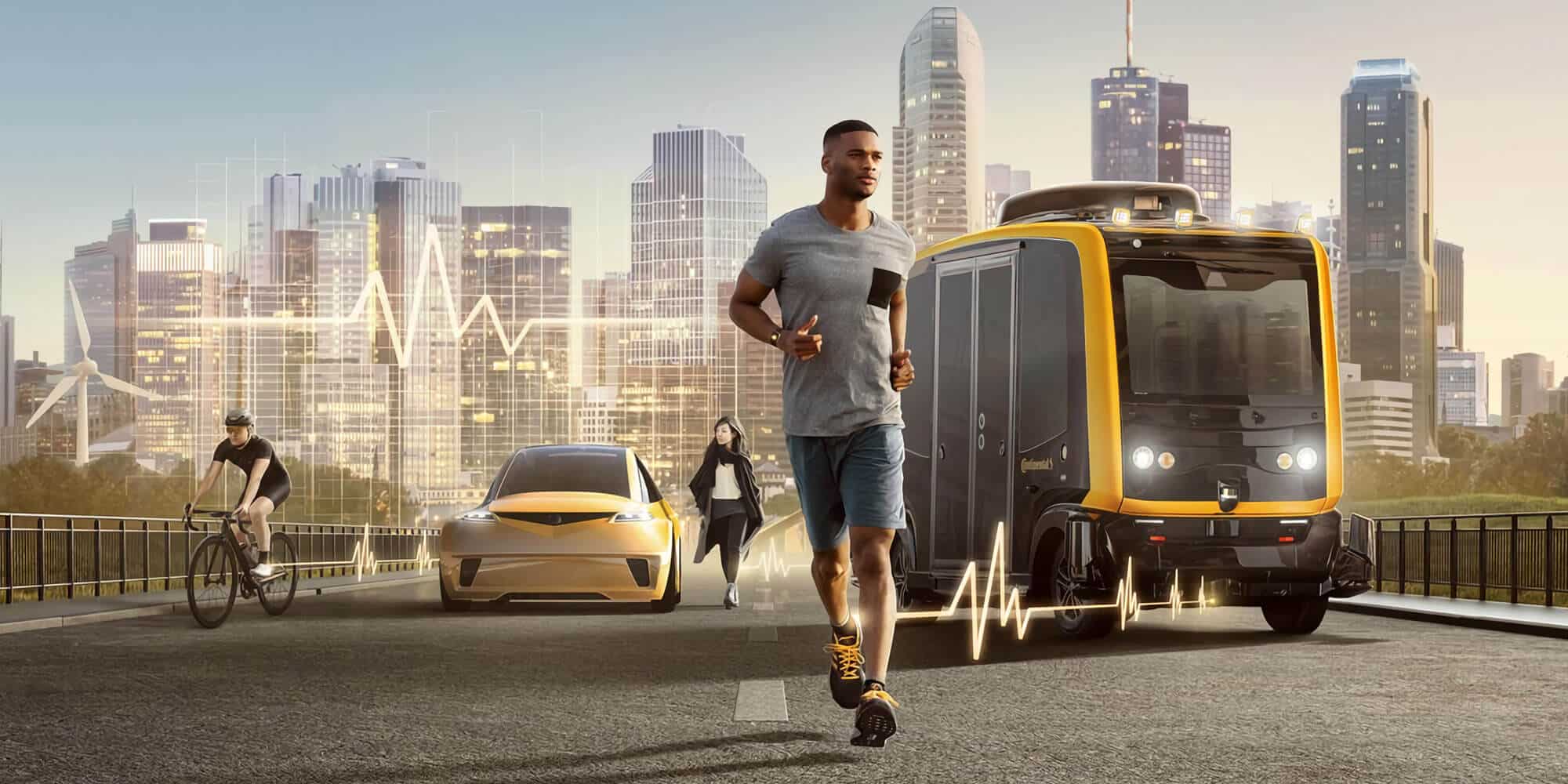

MOBILITY IS THE HEARTBEAT OF LIFE
At the Frankfurt Motor Show IAA, technology company Continental has presented numerous innovations that reflect the three major trends of the industry summit, all under the tagline of “Mobility is the Heartbeat of Life.” “Zero accidents, zero emissions and zero stress thanks to smart connectivity and convenience: this is what our pioneering technologies are helping to realize. Technology is our strength and is an area in which Continental has an outstanding level of expertise,” says Dr. Elmar Degenhart, chairman of the Continental Executive Board.
The highlight topics of the IAA 2019 included:
>> Impressive technology: first fully integrated electric axle drive goes into production
>> Further production successes with autonomous driving and 5G connectivity
>> Smart intersections in the smart city: everyone arrives safely
>> Greater safety, greater convenience, greater connectivity – for the benefit of all road users
>> In the development phase: language assistants with natural speech in the car
>> Fully connected aboard the driving simulator: safe, intelligent and stress-free driving to work or leisure
Impressive technology: first fully integrated electric axle drive goes into production
Millions of vehicles are already on the move today with Continental technology. This year will still see major innovations relating to Continental’s automotive trend topics going into production for the first time. The technology company has been able to convince vehicle manufacturers in China and Europe of the performance of Continental’s electric axle drive. The module weighs less than 80 kilograms and includes an electric motor, transmission, power electronics, and motor control. Thanks to the integration, numerous cable connections and plugs can be dispensed with. The fully integrated axle drive thus reduces the weight of electric vehicles by around 20 kilograms.
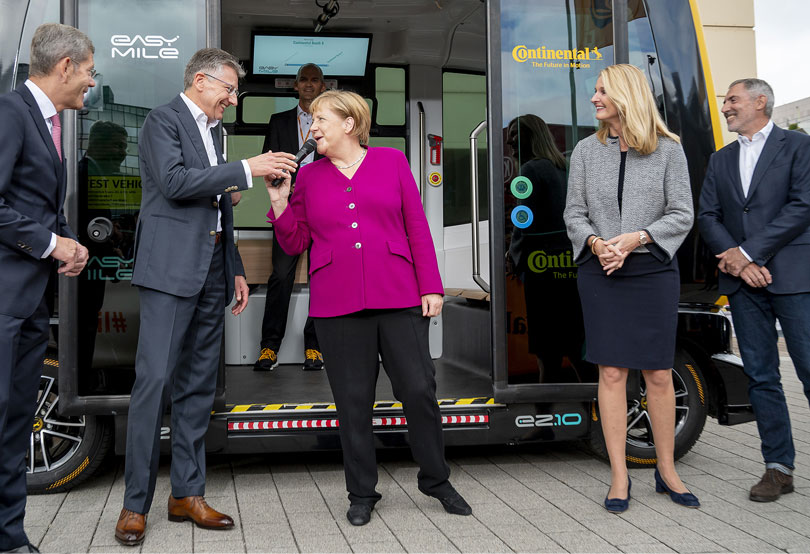
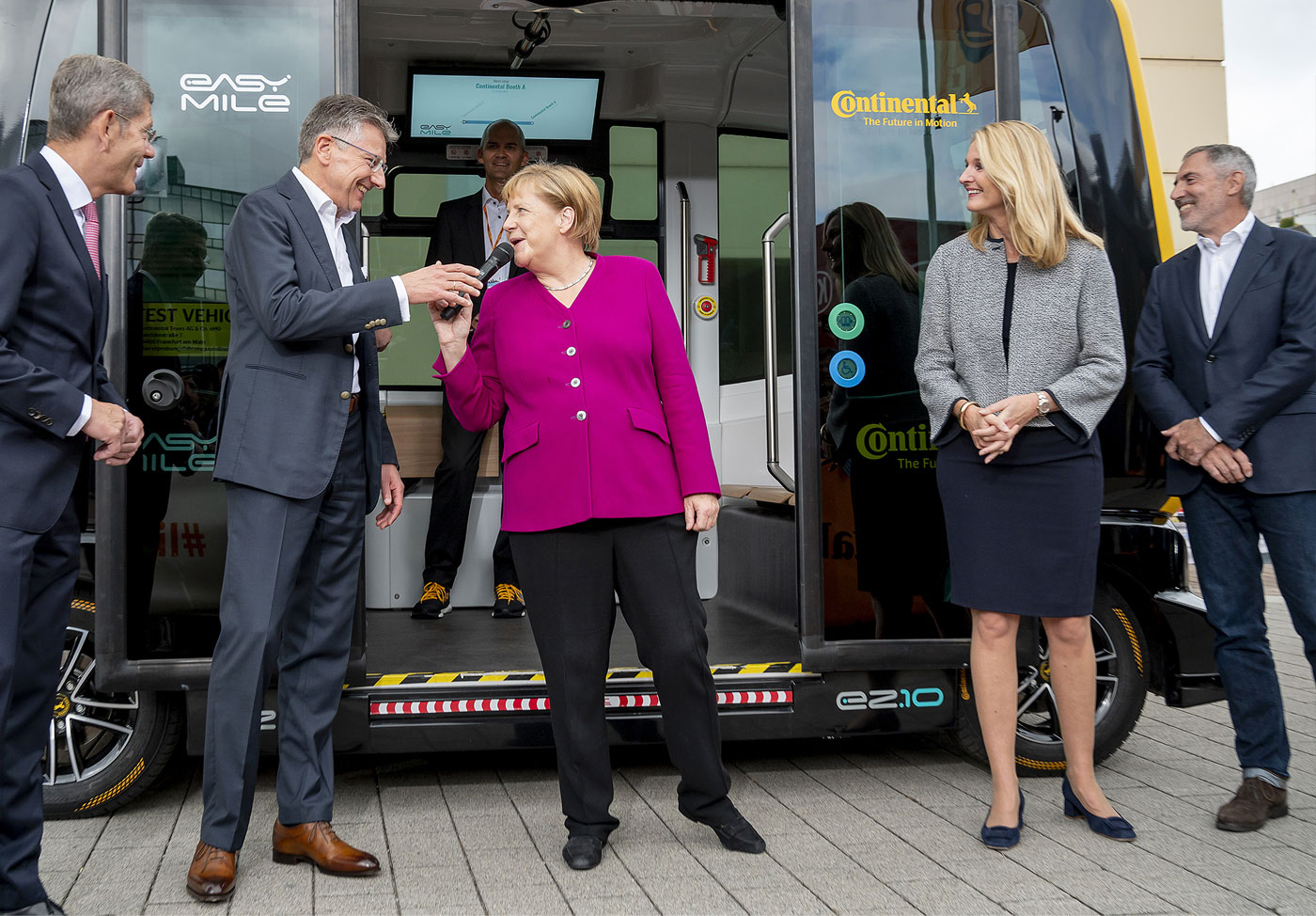
Further production successes with autonomous driving and 5G connectivity
Another production launch this year is a milestone in the development toward autonomous driving. The autonomous EZ10 shuttle bus from the French company EasyMile is the first to use a Continental radar system that has been specially developed for driverless vehicles and is ready for production. A total of seven radar sensors, each with a range of up to 200 meters, continuously monitor the vehicle environment. With this data, the system adapts its driving strategy, avoids obstructions and therefore prevents dangerous traffic situations on the route ahead at an early stage. Since such autonomous shuttle buses will be mainly used in an urban environment in future, this system protects pedestrians and cyclists in particular.
Furthermore, development of Continental’s first worldwide 5G solution for a vehicle manufacturer is already underway. On this new platform, Continental’s connectivity experts are combining the features of fifth-generation cellular communications with technologies for short-distance radio for direct data exchange between different vehicles and the infrastructure. The vehicles talk to each other faster than ever before, with fewer interruptions. They can warn one other, for example, of accidents behind a bend or traffic jams ahead. Here, too, Continental is integrating previously separate functions, reducing the vehicle’s weight. This represents an important contribution to the environmental efficiency of vehicles and increased road safety.
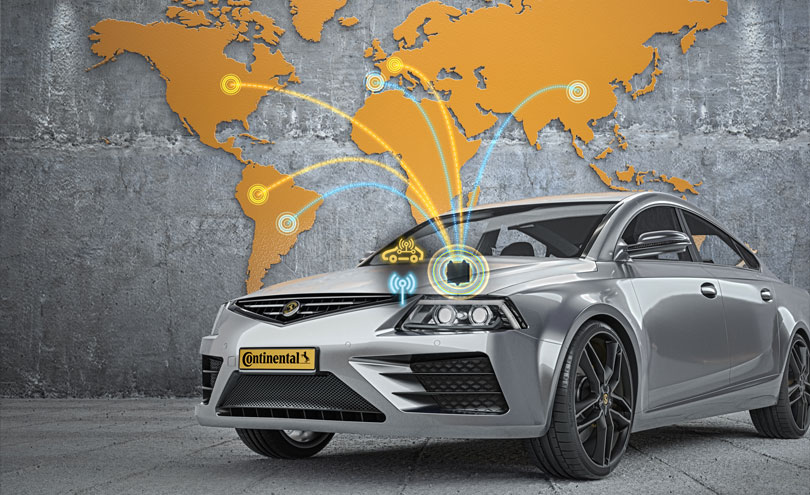
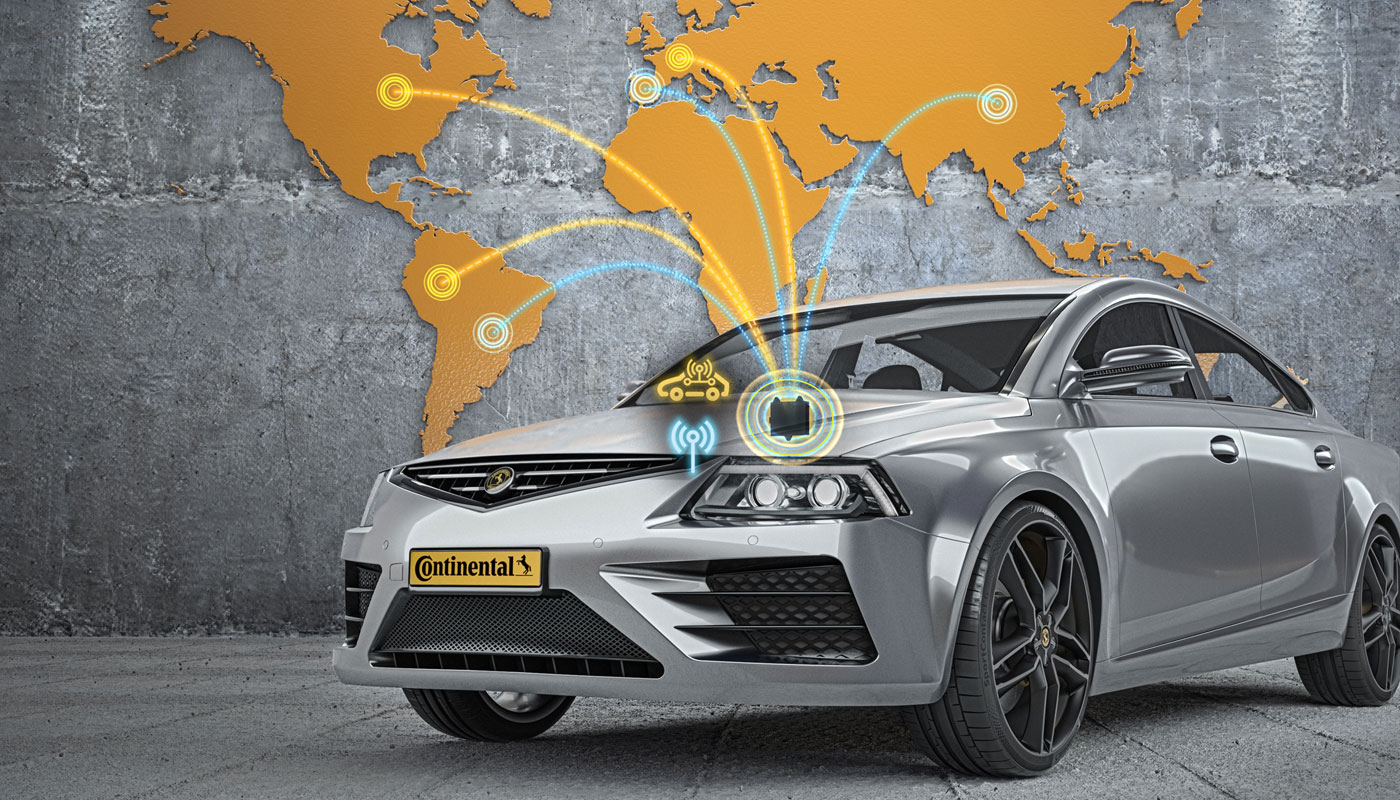
Smart intersections in the smart city: everyone arrives safely
In pilot cities in North America and Asia, Continental is currently exploring the possibilities presented by greater connectivity between all road users. In this project, ordinary traffic intersections have been transformed into highly intelligent test fields equipped with smart sensor technology. Traffic lights and streetlights equipped with sensors exchange data with vehicles in the vicinity to protect pedestrians and cyclists in particular. This technology can, for instance, warn a driver of concealed pedestrians or other more vulnerable road users when turning left. Traffic data from street lamps can ultimately reduce emissions: signal changes at traffic lights can be controlled in such a way as to optimize traffic flow and reduce stationary time at intersections.
Greater safety, greater convenience, greater connectivity – for the benefit of all road users
Continental is setting technological milestones not only in the field of electric drives, but also in the development of autonomous driving, a second major trend at this year’s IAA. This goes hand in hand with the gradual realization of “Vision Zero” – the goal of zero-accident mobility. Powerful in-vehicle sensors form the basis for this technology. Continental is combining new radar and camera sensors with intelligent data processing in the cloud, which supports improved functions for assistance systems. For example, Continental is introducing a predictive stability control system that warns the driver before a curve in the road if the vehicle is traveling too fast for the current road conditions and automatically brakes, if necessary, to adjust the vehicle’s speed. This too ensures greater safety and convenience.
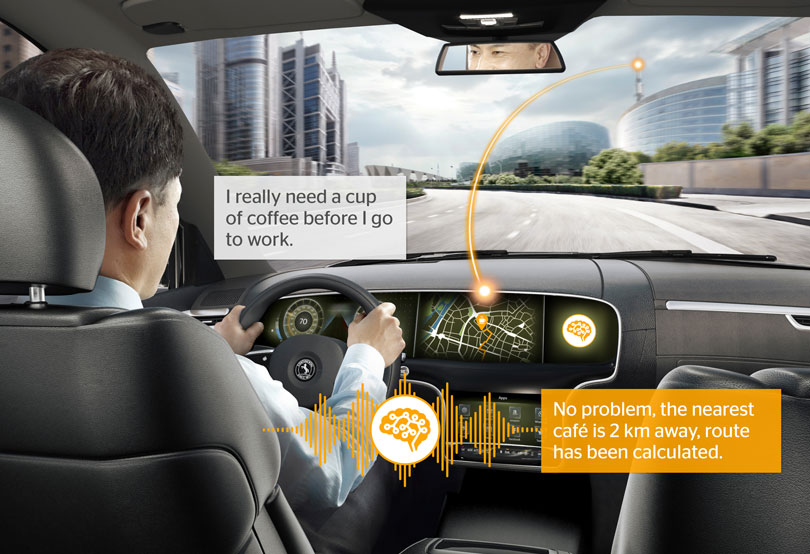
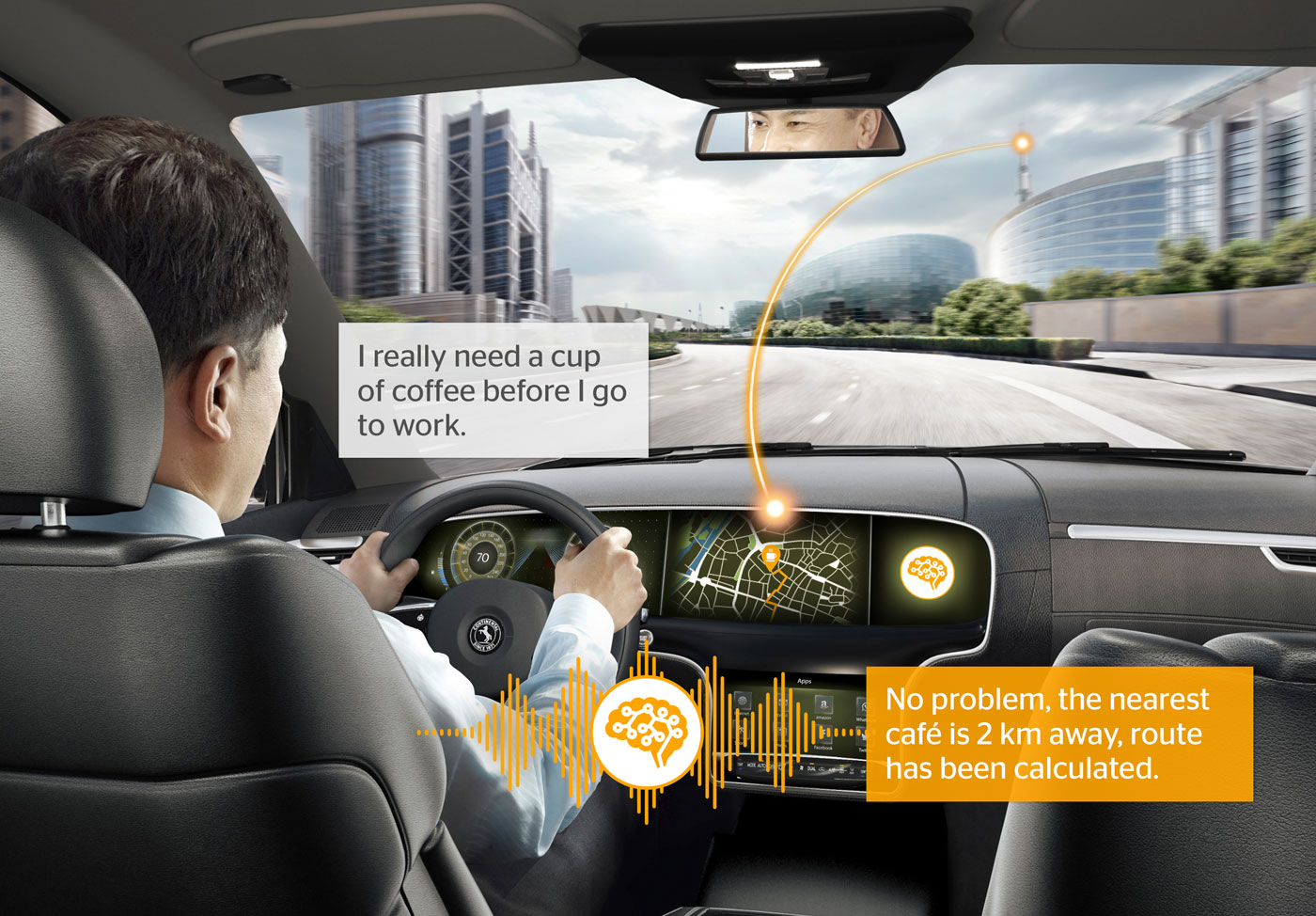
In the development phase: language assistants with natural speech in the car
One result of Continental research is intuitively designed operating systems. Simple communication between the driver and the vehicle with the aid of an intelligent voice-activated digital companion and three-dimensional displays increases the acceptance of new vehicle technologies. Continental is working on an adaptive voice-activated digital companion that reacts to natural speech and is precisely adapted to vehicle conditions. This makes operation easier and drivers do not have to take their eyes off the road. This increases attention to traffic, reduces the risk of accidents, and also lets the driver relax.
Another trend-setting concept is connected windows in the car. These can be specifically darkened, for example to avoid glare caused by a low sun. Furthermore, they reduce the energy required for cooling the vehicle interior and simply enhance occupant privacy.
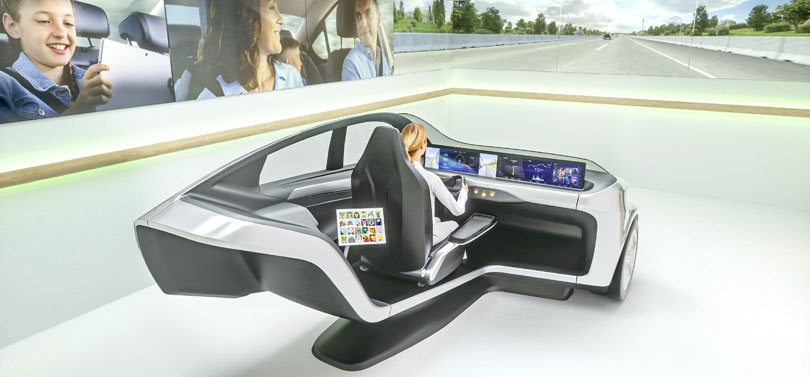
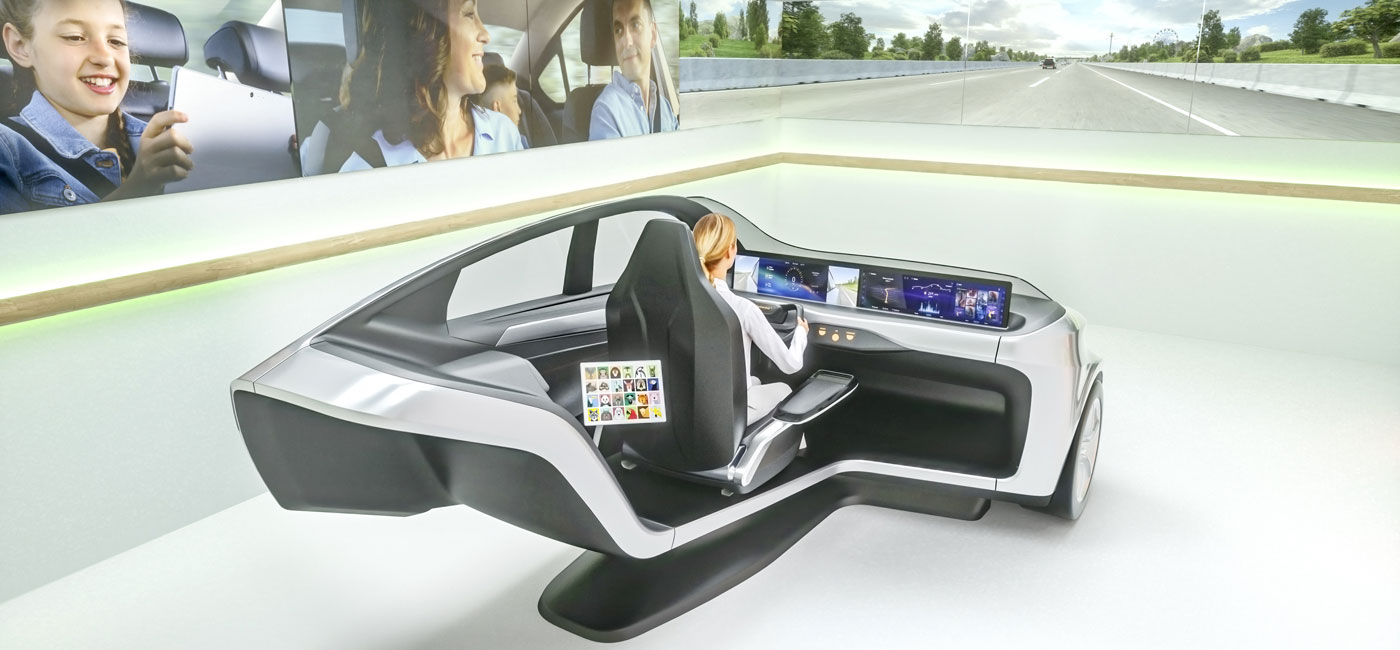
Fully connected aboard the driving simulator: safe, intelligent and stress-free driving to work or leisure
Continental's Networked Mobility demonstrator makes the world of tomorrow’s intelligent mobility a tangible experience today. And not just virtually, as visitors can experience our technologies and solutions by sitting in the cockpit itself,” explains Dr. Karsten Michels, head of Systems & Technology in Continental’s Interior division.
Impressive demonstration of new approaches towards human-machine interaction
In order to make connected mobility a tangible experience, Continental has bundled its expertise in human-machine interaction and connectivity and integrated a wide range of technologies from both areas in the demonstrator. A holistic display solution covering the entire width of the cockpit immediately catches the eye and allows Continental to further advance human-machine interaction for future mobility scenarios by extending or retracting according to driving mode. During manual driving, only the relevant information such as speed or navigation should be displayed, so half of the screen disappears into the cockpit. As soon as the driver activates the automated driving mode, the display extends completely and serves both driver and passenger as an interface for infotainment applications, which they can operate via touch function and whose content can be adapted according to preference. The large-format display is powered by Continental’s Integrated Interior Platform, a comprehensive cockpit software and hardware solution that makes vehicles a fully-functioning part of the Internet of Everything.
Automated driving in the Networked Mobility Demonstrator is activated with the help of Continental’s Morphing Controls solution, which makes buttons appear as if by magic from a smooth surface. When the automated driving mode is activated, however, not only the screen view but also the rest of the vehicle interior changes. The driver’s seat moves backwards to give the user more room for movement, while Intelligent Glass Control automatically darkens the windows to give passengers greater privacy and make the vision of the mobility living space even more real. As an additional layer of human-machine interaction, Continental developers have integrated the Ac2ated Sound audio solution into the demonstrator. The speakerless technology uses existing surfaces in the vehicle as sound boxes and creates sound, for example, by a vibrating A-pillar or rear shelf, which enables passengers to experience a completely new 3D sound experience.
Experiencing holistic connectivity
The Networked Mobility Demonstrator is also an opportunity for Continental to showcase its know-how in connectivity. Thanks to eHorizon, the vehicle always has up-to-date map data and is warned of possible dangers via its connection to intelligent intersections. The demonstrator also shows how real-time networking based on 5G technology will enable high-resolution video conferences or online video games in vehicles in the future. At the same time, wireless software updates ensure that vehicle electronics and software are always up to date and as secure as possible.
The mobility experience in Continental’s IAA demonstrator is rounded off by the integration of the Digital Companion. The smart assistant ensures that the vehicle interior adapts to the respective driver from the seat and mirror settings to music selection, knows exactly where to go thanks to its calendar connection and keeps children in the back seat amused with personalized entertainment suggestions.
